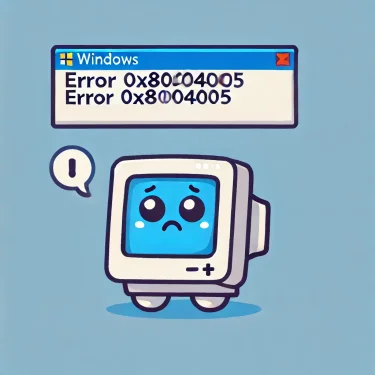
Windows Update Aftermath? Fix Display Problems Step by Step
Have you ever thought, “Hmm, something looks weird on the screen…” right after running Windows Update?
You might find familiar text suddenly blurry, desktop icons becoming unexpectedly tiny or oversized, or once-vibrant colors looking dull and washed out. It’s frustrating—especially after updating to the latest version, only to find your PC feels less comfortable to use.
Today’s guide dives deep into why Windows updates can unexpectedly alter your display, and walks you through step-by-step solutions to restore clarity and comfort—presented in a friendly, easy-to-follow way, even if you’re not a tech pro.
Why Does a Windows Update Affect How Your Screen Looks?
Windows Update isn’t just about security patches or new features—it also updates core system components that control graphics and display settings. Here are the three most common reasons your display might act strangely after an update:
- Automatic graphics driver replacement and compatibility issues
- Resetting display settings (resolution and scaling) back to default
- System‑level changes that adjust display behavior and color profiles
Let’s explore each reason in detail:
1. Graphics Driver Auto‑Update and Compatibility
During updates, Windows may swap in a generic graphics driver through Microsoft Update. While this usually improves driver currency or security, it can also cause:
- Screen flickering or visual artifacts
- Changed resolution
- Odd or washed‑out colors
- Reduced performance during gaming or video playback
This typically happens when the generic driver doesn’t perfectly match your specific hardware setup or conflicts with other software.
2. Display Settings (Resolution and Scaling) Reset to Default
Sometimes an update resets your display settings—like resolution or scaling—back to default. For example, if you were using 150% scaling on a high‑res laptop, it might revert to 100%, making everything appear tiny.
Multi-monitor setups are particularly vulnerable: an update may misidentify a secondary screen’s resolution, giving you blurred or stretched visuals.
3. System‑Level Adjustments to Color Management and Display Rendering

Microsoft regularly implements changes to color profiles, display rendering engines, and other underlying systems to stay current with evolving standards. As a result, even if you haven’t manually changed any setting, you might notice:
- Slight shifts in color tone or contrast
- Text rendering that looks subtly different
- Color accuracy variances—crucial if you edit photos or design graphics
These changes may seem minor, but to users sensitive to color fidelity or visual sharpness, they can be noticeable.
What You Can Do: Restore Your Display Step by Step
If your screen looks off after an update, take a deep breath and follow these steps—don’t rush. Go in order, and check if each one makes things better:
- Step 1: Restart your PC
- Step 2: Reinstall or roll back the graphics driver
- Step 3: Review resolution and display scaling settings
- Step 4: Check and reset color profile settings
- Step 5: Install the latest manufacturer graphics driver
Step 1: Restart the PC
Surprisingly, many display glitches vanish after a simple reboot—especially if the update was still finishing background tasks.
Step 2: Reinstall or Roll Back the Graphics Driver
Follow these steps:
- Right‑click the Start button → select “Device Manager.”
- Expand “Display adapters,” right‑click your graphics card.
- Either:
- Update Driver: Search automatically.
- Roll back driver: Use this if the option is available.
Step 3: Check Resolution and Scaling
- Right‑click desktop → “Display settings.”
- Under “Display resolution,” confirm it matches the recommended setting.
- Check “Scale & layout”—choose your preferred zoom (e.g. 100% or recommended).
Step 4: Inspect and Reset Color Profile
For washed‑out or odd colors, do this:
- Open Settings → System → Display → “Advanced display settings.”
- Click “Display adapter properties” → switch to “Color Management” tab.
- Choose the correct profile for your monitor or use “Add…” to select your manufacturer’s ICC profile.
- Alternatively, remove all profiles and let Windows apply a default one.
Step 5: Install Official Graphics Drivers
If Step 2 didn’t help, download the latest driver from your PC manufacturer or GPU maker:
- PC manufacturer website (e.g., Dell, HP, Lenovo): search using your model and install the provided driver.
- GPU maker website (NVIDIA, AMD, Intel): download and install their driver package.
To ensure a clean install, uninstall previous drivers first—many manufacturers offer removal tools for this.
Recent Trends After Windows Update
Since spring 2025 and especially in Windows 11 24H2, Microsoft has added more updates related to AI-driven graphics and new rendering engines. These often cause temporary mismatches in display settings and drivers. Reported issues include:
- HDR automatically enabling—colors may become overly bright or unnatural
- Multi‑monitor setups losing proper resolution or scaling
- Blurry fonts or greyscale text because ClearType settings were reset
Recommended extra actions:
- Toggle HDR off/on: Settings → System → Display → “Use HDR.”
- Run ClearType tuner: Search “ClearType” from Start and launch the adjustment tool.
- Verify individual display settings in multi‑monitor setups.
Also, check the official “Known issues” from Microsoft: Settings → Update & Security → Update history → Known issues.
We monitor these and post updates—but you can also follow the Windows Insider blog and community forums for real‑time fixes.
✅ Wrap‑Up: Take Calm, Systematic Steps
Display changes after Windows Update are common—and usually fixable. By working methodically through the steps above—restart, driver adjustment, settings review, and driver reinstallation—you can restore your PC’s comfort and clarity.
If the problem feels overwhelming, don’t hesitate to contact your PC’s manufacturer or your place of purchase for official support.
With the right approach, you’ll regain a crisp, reliable display in no time. Happy computing!
✔️You might also find these helpful:
▶︎July 2025 Patch Tuesday – What to Expect Based on the Latest Preview Updates
▶︎[Warning] Graphics Driver Broken After Windows Update? Here’s How to Fix It (Step-by-Step Guide)


